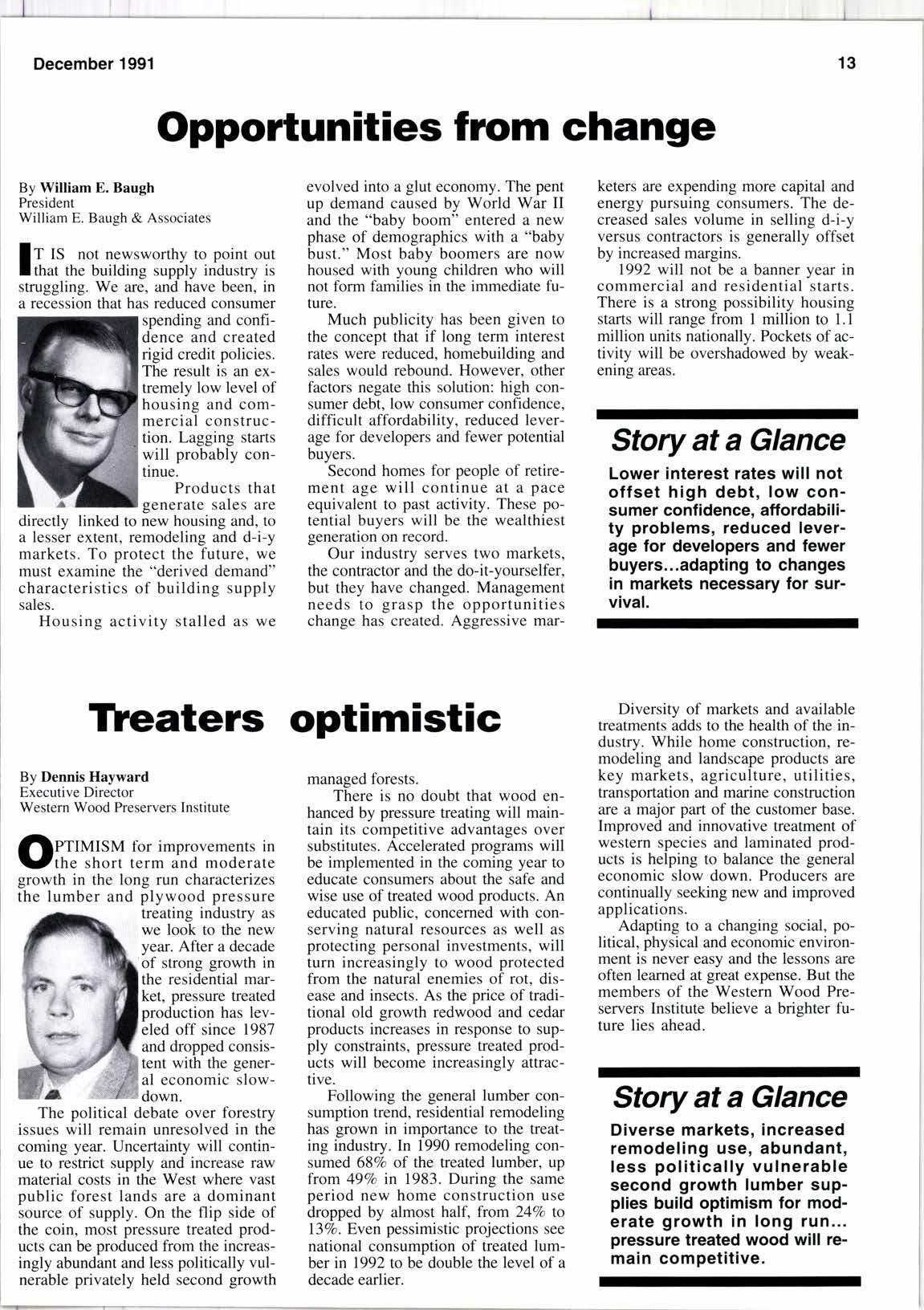
2 minute read
Tleaters optimistic
By Dennis Hayward Executive Director Western Wood Preservers Institute
firrrutsM for improvements in Ythe short term and moderate growth in the long run characterizes the lumber and plywood pressure treating industry as we look to the new year. After a decade of strong growth in the residential market, pressure treated production has leveled off since 1987 and dropped consistent with the general economic slowdown.
The political debate over forestry issues will remain unresolved in the coming year. Uncertainty will continue to restrict supply and increase raw material costs in the West where vast public forest lands are a dominant source of supply. On the flip side of the coin, most pressure treated products can be produced from the increasingly abundant and less politically vulnerable privately held second growth managed forests. keters are expending more capllal and energy pursuing consumers. The decreased sales volume in selling d-i-y versus contractors is generally offset by increased margins.
There is no doubt that wood enhanced by pressure treating will maintain its competitive advantages over substitutes. Accelerated programs will be implemented in the coming year to educate consumers about the safe and wise use of treated wood products. An educated public, concerned with conserving natural resources as well as protecting personal investments, will turn increasingly to wood protected from the natural enemies of rot, disease and insects. As the price of traditional old growth redwood and cedar products increases in response to supply constraints, pressure treated products will become increasingly attractive.
Following the general lumber consumption trend, residential remodeling has grown in importance to the treating industry. In 1990 remodeling consumed 68Vo of the treated lumber, up from 49Vo in 1983. During the same period new home construction use dropped by almost half, from 24Vo to l3%o. Even pessimistic projections see national consumption of treated lumber in 1992 to be double the level of a decade earlier.
1992 will not be a banner year in commercial and residential starts. There is a strong possibility housing starts will range from I million to l.l million units nationally. Pockets of activity will be overshadowed by weakenlng areas.
Story at a Glance
Lower interest rates will not offset high debt, low consumer confidence, affordability problems, reduced leverage for developers and fewer buyers...adapting to changes in markets necessary for survival.
Diversity of markets and available treatments adds to the health of the industry. While home construction, remodeling and landscape products are key markets, agriculture, utilities, transportation and marine construction are a major part of the customer base. Improved and innovative treatrnent of western species and laminated products is helping to balance the general economic slow down. Producers are continually seeking new and improved applications.
Adapting to a changing social, political, physical and economic environment is never easy and the lessons are often leamed at great expense. But the members of the Western Wood Preservers Institute believe a brishter future lies ahead.
Story at a Glance
Diverse markets, increased remodeling use, abundant, less politically vulnerable second growth lumber supplies build optimism for moderate growth in long run... pressure treated wood will remain competitive.










